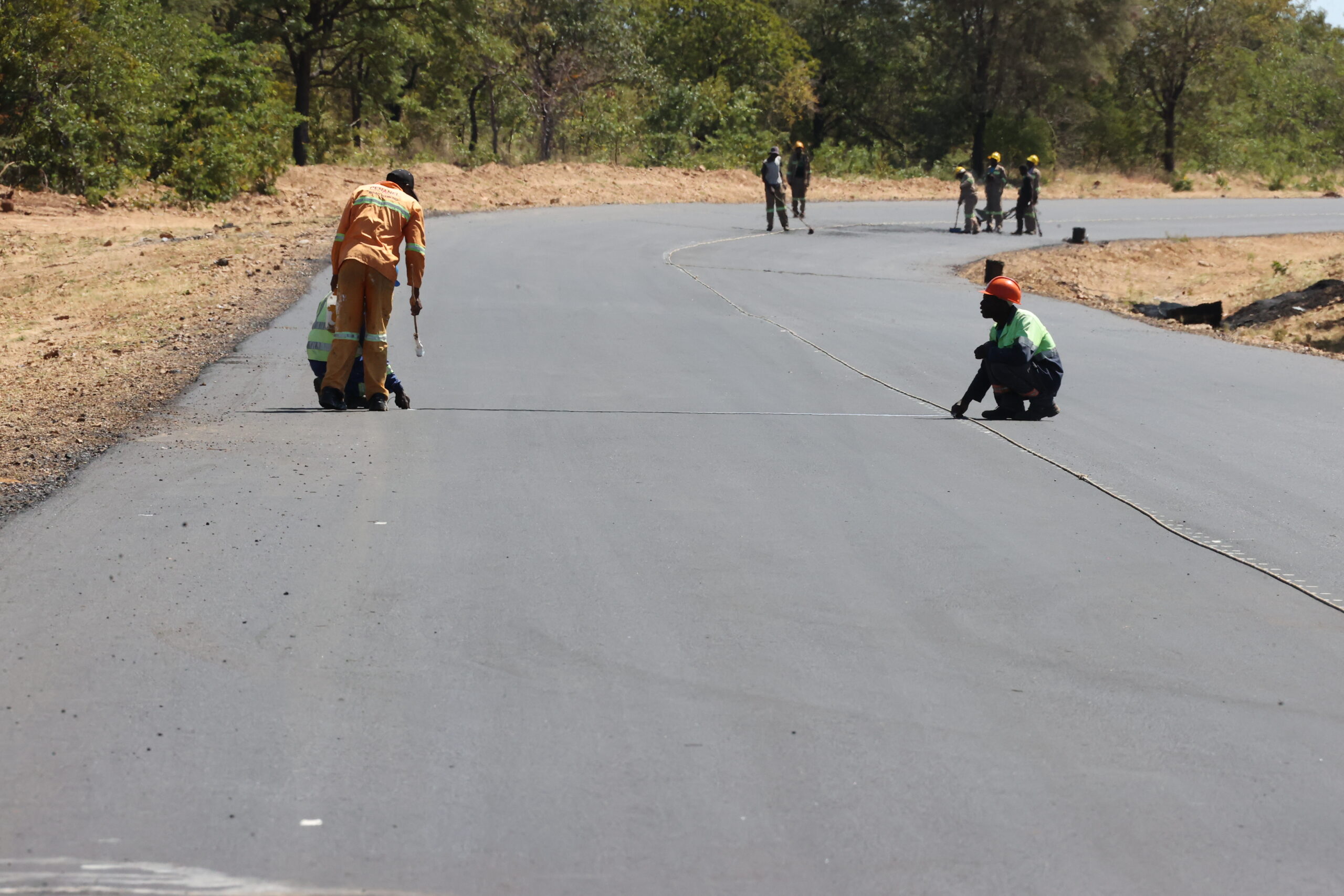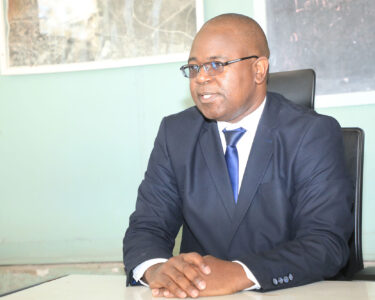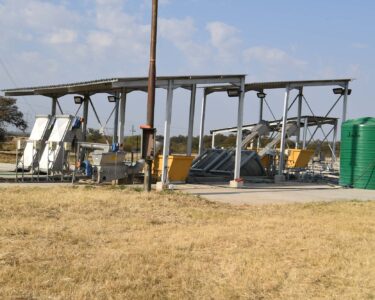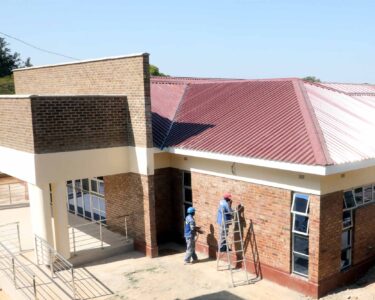Richard Maruta, the District Development Coordinator of Mbire District, spoke to Brick by Brick about the prospects of one of the newest districts in the country, Mbire. The 365 km Harare-Kayemba road, now under construction, is bound to open up the area and bring in a lot of investment, Maruta said. Here are excerpts.
Q: Can you give us an overview of this district?
A: Mbire District was born in 2006. It used to be part of the Guruve Rural District Council (RDC). But due to the huge distances and the growth in population, the lower part of the Guruve District was severed through a Presidential Proclamation in 2006 to form the Mbire District, which, to date, has 17 wards, covering all the way from Mahuhwe to Kayemba.
Mbire is in the lower velt of the country’s ecological regions, and therefore it is prone to droughts. Ironically, due to the recent development of climate change, we are witnessing a lot of floods in the Mbire District. The good news, however, is that since we are now receiving a lot of rains, we are expecting a big harvest within our communities and we will be able to sell our grain to the GMB.
But the increased agricultural activities have brought increased human-wildlife conflicts. We are a wildlife community. Our farmers have realised that they can now plough, using the Presidential Inputs Programme. Unfortunately, they are now encroaching on animal buffer zones and, therefore, we are getting more human-wildlife conflicts.
Similarly, while humans are encroaching on what we knew as animal buffer zones, animals like elephants and other grazers, have also realised that our farmers are now having bumper harvests, so the animals too are encroaching on the fields of farmers.
We have advised farmers that an elephant can smell sorghum from 100 km away. So it will come. And one elephant can destroy 20 hectares of sorghum. One elephant. And now we have a lot of them here, their population has gone out of control now. But, thankfully, our National Parks guys are on top of the situation.
Q: You mean National Parks are on top of it, and farmers are happy? Their crops are still there?
A: Yeah. We have carried out some awareness campaigns and taught farmers how to keep away the elephants. For example, we have the chili method where you plant a lot of chilis alongside the field, so that when the elephants smell the chili, they walk away and leave your field alone.
Q: Really? A whole big animal like an elephant can’t stand the little chili?
A: Yes, chilis can do wonders.
Q: Have there been any casualties in this human-animal conflict?
A: Yes, we’ve recorded some fatalities.
Q: On the human side?
A: Yes. This year alone, we have had three fatalities where elephants trampled upon people who were trying to defend their crops.
Q: Let’s move away from the bad news and concentrate on the high impact projects in the Mbire District. Can you tell us some of them?
A: One of our high impact projects is the construction of the Harare-Kayemba Road, by which you came. That one is going to bring a lot of economic activities to Mbire District. It is going to attract a lot of investment.
As you witnessed along the way, the district is less developed because when it was joined to the Guruve District, a lot of development was concentrated in Upper Guruve, and not here. But this time around, since Mbire has now become a standalone district, the road infrastructure is now improving and will attract a lot of rural investment.
This road starts from the Mazowe turn-off and come all the way to Kayemba. From Harare, it is 365 km long. The contractor, Exodus Company, started work from Mahuhwe and is making good progress towards Mushumbi. It completed 10 km between January (when the work started) to mid-April. From Mahuhwe to Kayemba is about 180 km. The section from Mazowe will be rehabilitation work – repair and rehab. Tarring will start from Mahuhwe to Kayemba, that’s about 180 km.
The government wants this road to open up links with Zambia through Luangwa. The work was initially under the Ministry of Transport, but the government later outsourced the work to Exodus, and now the speed of work has been enhanced.
Q: When do you think the road will be completed?
A: Around 2025.
Q: What will be the significance of the road to the district?
A: It will attract a lot of investment and open up access to inaccessible areas close to Kayemba. That area is a little bit inaccessible when it rains. The worst part is the last 60 km to Kayemba, after Angwa.
Q: Is there another star project you want to talk about?
A: There is a new sugar estate coming up, where the government is looking for an investor to grow sugar cane here, a few kilometres from here. We also have an ARDA irrigation scheme in Kayemba. Water from the Zambezi will irrigate the fields. In the near future, ARDA is expected to surrender some of the plots to local farmers to implement the irrigation scheme.
There is also Organic Africa, some 5 km away from here, which, to date, has employed 100 people. They are investors who are leasing land from ARDA. There is a lot of irrigation taking place there. It is the only green place in this area. They are growing herbs – mint, ginger, etc – for export.
Q: What has been the response of the local community to the construction of the Harare-Kayemba Road and the star projects you have talked about?
A: Our local community is now trying to rejuvenate its business approach. A lot of investment is being done in the hospitality industry (lodges, etc) right from the escarpment in Muzarabani to Kayemba. There are a lot of lodges coming up.
Even at Angwa, a truck inn has been completed in anticipation of the trucks that will be using this road. There is also investment in a supermarket. At the moment, we don’t have any supermarket in this area, only grocery shops.
We are supposed to have a smart city at Kayemba, similar to the Mount Hampden one. The place has been demarcated and we are in the process of coming up with an integrated development plan, which is now in the Minister’s office at headquarters. Final touches are being done to it.
Q: Talking about Kayemba, why is the Zimbabwean side less developed than the Zambian side?
A: I believe that in Zimbabwe we are a bit more cautious in terms of infrastructural development. If you go to the Zambian side, they move with speed but you will find that there is a lot of confusion in terms of the infrastructure. There is no order. You might find government offices in the midst of a settlement. Sometimes houses are erected randomly, without proper planning.
But on the Zimbabwean side, we are being cautious because we don’t want to have a scenario where corrections have to be made after the Smart City is completed.
Q: Has devolution been a help to Mbire District?
A: Yes, we actually thank the government for delivering devolution, because Mbire became a new district through devolution. We now have about 57 schools, and 21 rural health centres. We have additional plans to upgrade the Mushumbi Clinic to a hospital and another clinic in Kayemba also to a hospital. All this is going to be done through devolution funds.
Q: What are some of the challenges you are facing in this district that needs highlighting?
A: The major challenge here is the drought, it is quite a drawback because people are rendered hopeless. They have to depend on the government when no work is being done.
Another challenge is that given the distances between schools in this district, children have to walk about 10 km to access the nearest school, and this has been a disincentive to our learners. This has resulted in early child marriages.
The uniqueness of our early child marriages is not like the ones you find in Marange. Here it is child to child, 16-year-old boy and 12-year-old girl. They marry but the marriage won’t last long because the father figure, who is 16, will not be able to fend for the family. So he leaves the marriage and goes back to his parents. And the girl, who is left to the mercy of society basically, resorts to prostitution to fend for herself and the child, if the marriage resulted in a child.
Q: What have the authorities been doing to control the situation?
A: We have been encouraging people to go to school, and we have actually focused part of our devolution funds on the construction of more schools. You must have seen the Pande Primary School on the way here. It is a new school. There is another one called Tanaka. There are more of such new schools in the district. We are trying to reduce the distances between schools.
The other challenge is that our water table is very low. That means when you are drilling a borehole, you have to go deeper than 35 metres.
Q: You are not bad actually with your 35 metres, because we were told in the Rushinga District that they drill down to 120 metres before they get water.
A: Wow! 120 meters. Here we also go to 120 metres, because when you drill up to 80 metres, the water table goes down when the dry season comes and you have to drill some more metres down, to even 120 metres.
Q: We heard that you have dinosaur spoors in this area?
A: Yes, we do have them. Footprints of dinosaurs. We wonder if they were walking on lava. You never know what was happening millions of years ago. So yes, we have the dinosaur spoors somewhere along the Mahuhwe road.
And here, as you go towards Angwa, there is a tree that has actually turned into a rock. You can see it is a tree but when you touch it, it is a rock.
So in terms of tourism, our wildlife is a major attraction – elephants, lions, etc. We have safari operators who are encouraging tourism here. As a result, the number of foreigners coming to see our wildlife is growing.
CAPTIONS
Pic 1.
Richard Maruta, the Mbire District Development Coordinator: “We thank the government for delivering devolution, because Mbire became a new district through devolution. We now have about 57 schools and 21 rural health centres”
Pic 2:
The Harare-Kayemba road under construction. This is the section between Mahuhwe and Mushumbi, which is being done by Exodus Company







